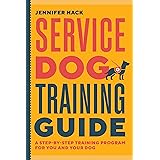The journey of living harmoniously with a canine companion is often paved with clear communication, and this journey begins with fundamental training. As demonstrated in the accompanying video, basic dog obedience commands such as “sit,” “down,” and “stand” are essential building blocks. These simple cues serve as a universal language, enabling owners and their dogs to understand each other better, fostering a stronger bond and ensuring safety in various situations.
For any new dog owner or individual looking to improve their dog’s behavior, establishing a foundation of basic obedience is paramount. It is often observed that a well-trained dog experiences greater freedom and a richer quality of life, as they can be reliably taken to more places and engaged in more activities. This article will expand on the importance of these foundational commands and offer guidance on how they can be effectively taught using positive reinforcement methods.
The Foundational Importance of Basic Dog Obedience Commands
Basic dog obedience commands are not merely about control; they are about establishing a clear line of communication and building trust between a dog and its owner. Imagine if you could always convey what you needed from your dog, and they consistently understood. This level of clarity significantly reduces frustration for both parties, making daily interactions much more enjoyable and predictable.
Furthermore, these commands play a critical role in a dog’s safety. A reliable “sit” or “down” can prevent a dog from running into a dangerous situation, while a “stand” command can be incredibly useful during vet visits or grooming sessions. Dogs thrive on structure and knowing what is expected of them, and this structure is provided through consistent training. The confidence gained from understanding commands often leads to a more relaxed and happier dog.
Mastering the “Sit” Command
The “sit” command is frequently considered one of the first and most fundamental obedience cues taught to dogs. It is a versatile command that can be used in numerous everyday scenarios, from waiting patiently at a door to greeting guests politely. A dog that is asked to sit is generally in a calmer state, which can be beneficial for managing excitement or anxiety.
Teaching Your Dog to Sit Effectively
To teach the “sit” command, a common and highly effective method involves luring. A small, high-value treat can be held near your dog’s nose, then slowly moved upwards and backwards over their head. As their nose follows the treat, their rear end naturally lowers into a sitting position. The moment their hindquarters touch the ground, the verbal cue “sit” is calmly given, and the treat is immediately delivered along with praise such as “Good!” or “Yes!” This immediate reward helps the dog associate the action with the word and the positive outcome.
Repetition of this exercise in short, positive sessions is key. Once the dog reliably sits with the lure, the physical lure can gradually be faded, transitioning to just the verbal command and a hand signal. Many owners find that an open hand moving upwards from the dog’s nose provides a clear visual cue. Consistency is paramount during this phase, ensuring the dog truly understands what is being asked of them.
The Essential “Down” Command
The “down” command is often considered more challenging to teach than “sit” but is incredibly valuable for impulse control and relaxation. This command encourages a dog to lie completely flat, which can be beneficial for extended stays, calming an overexcited dog, or preventing jumping. It is a command that projects an immediate sense of calm and submission, useful in many scenarios where a dog needs to be settled.
Guiding Your Dog to the “Down” Position
Similar to “sit,” the “down” command is often introduced using a lure. Beginning with the dog in a sit position, a treat is held to their nose and slowly moved towards the ground and then slightly away from them. This motion encourages the dog to lower their entire body to follow the treat. As soon as their elbows touch the ground, the command “down” is given, followed by the treat and enthusiastic praise.
Some dogs may initially resist lying down, especially if they are energetic or unsure. In such cases, a gentle, guiding hand can be placed on their shoulders to encourage them into the position, always ensuring that no force is used. It is important that the dog views this as a positive experience. With practice, the lure can be faded, and the dog will learn to respond to the verbal cue and a downward hand signal, often an open palm moving towards the floor.
Understanding the “Stand” Command
While perhaps less frequently emphasized than “sit” or “down” for everyday interactions, the “stand” command holds significant practical value. It teaches a dog to remain still in an upright position, which is particularly useful for grooming, veterinary examinations, or even when stacking a dog for show. This command can also serve as an excellent transitional cue between other commands.
Teaching Your Dog to “Stand” Still
To teach the “stand” command, one effective method involves starting with the dog in a sit or down position. A treat is held in front of their nose and slowly moved forward, encouraging them to stand up and take a step forward. As they lift into a standing position, the verbal cue “stand” is given, immediately followed by the treat and praise. The goal is for the dog to stand still, rather than walk forward.
An alternative approach involves placing a hand under the dog’s belly and gently lifting them into a standing position, while simultaneously giving the “stand” command and offering a treat. As with all basic dog obedience commands, patience and consistency are essential. The hand signal for “stand” is often a flat hand held parallel to the ground, moving forward slightly. Over time, the physical cues can be minimized until the dog reliably responds to the verbal command alone.
The Power of Positive Reinforcement in Dog Training
Throughout the training process for basic dog obedience commands, the power of positive reinforcement cannot be overstated. As heard in the video with “Good girl!” and “Good,” rewarding desired behaviors is the most humane and effective way to teach. Positive reinforcement involves adding something desirable to the environment immediately after a behavior occurs, making that behavior more likely to happen again in the future.
This approach builds a strong, positive association with learning and with the owner. It is understood that dogs are more motivated to repeat actions that result in a reward, whether that be a tasty treat, enthusiastic verbal praise, a favorite toy, or a quick game. The precise timing of the reward is critical; it should be delivered within one to three seconds of the dog performing the correct action. This immediacy ensures the dog clearly understands which behavior earned the reward.
General Principles for Successful Dog Training
Effective dog training extends beyond individual commands; it encompasses a holistic approach to communication and relationship building. Consistency in commands, expectations, and rewards is paramount for a dog to truly understand what is being asked. It is often seen that dogs learn best when training sessions are kept short, typically 5-10 minutes, and conducted frequently throughout the day.
Patience is another virtue in dog training. Every dog learns at their own pace, and setbacks can occur. Maintaining a positive attitude and celebrating small successes will build confidence in both the dog and the owner. As a dog masters a command in a quiet environment, it is helpful to gradually introduce distractions, a process known as ‘proofing,’ to ensure the command is reliable in all situations. Engaging in basic dog obedience commands should always be a fun and rewarding experience for both ends of the leash.









